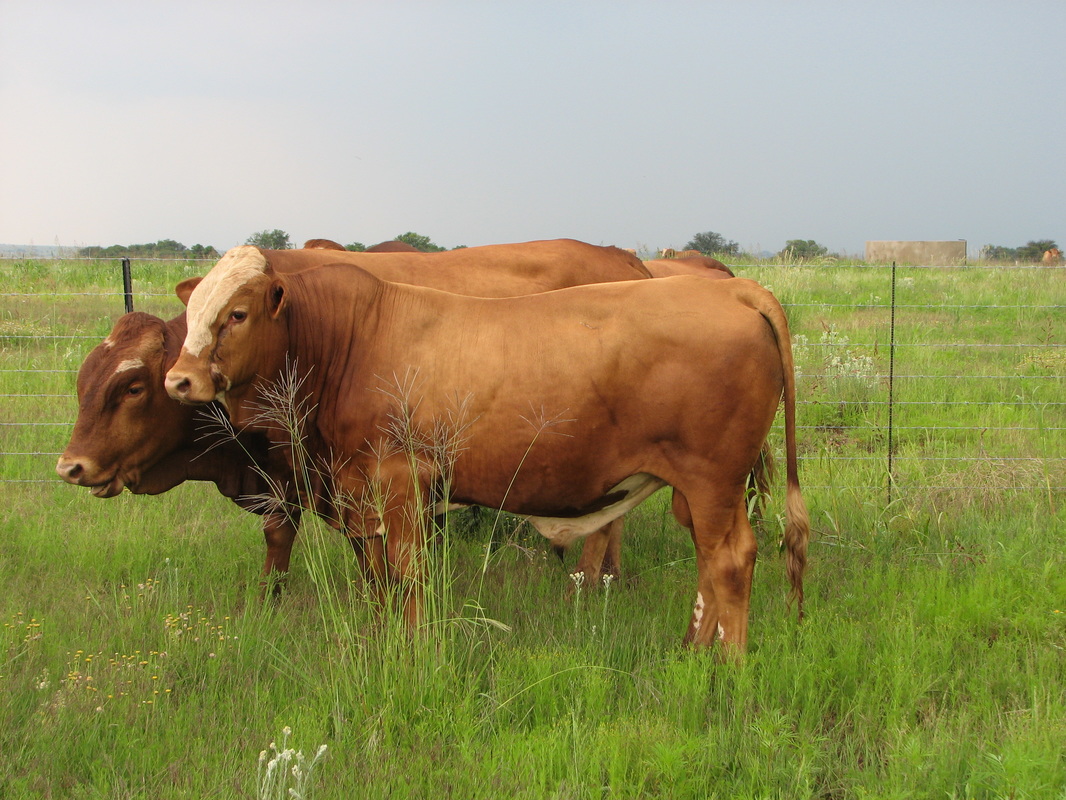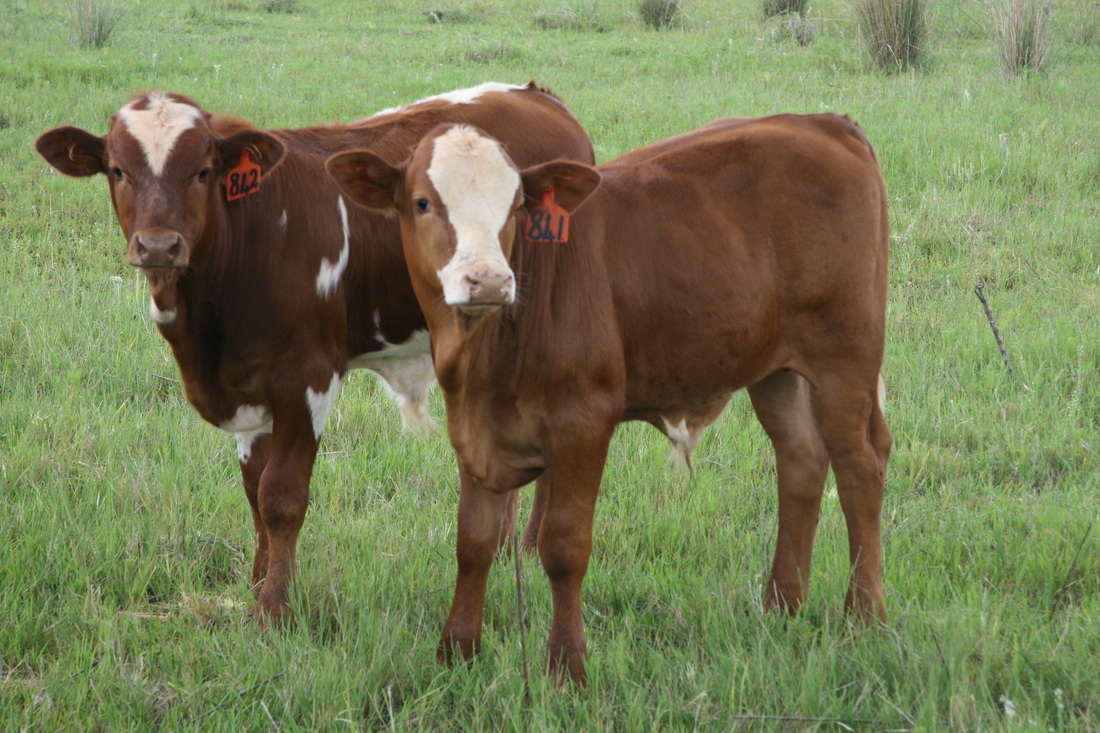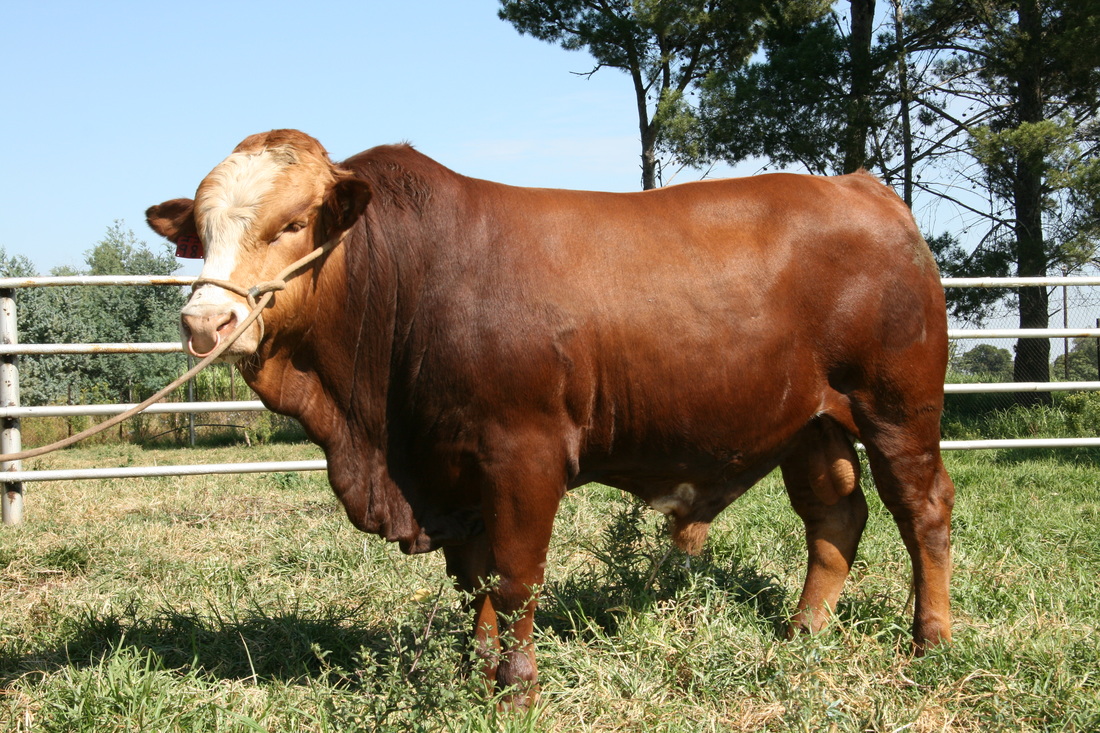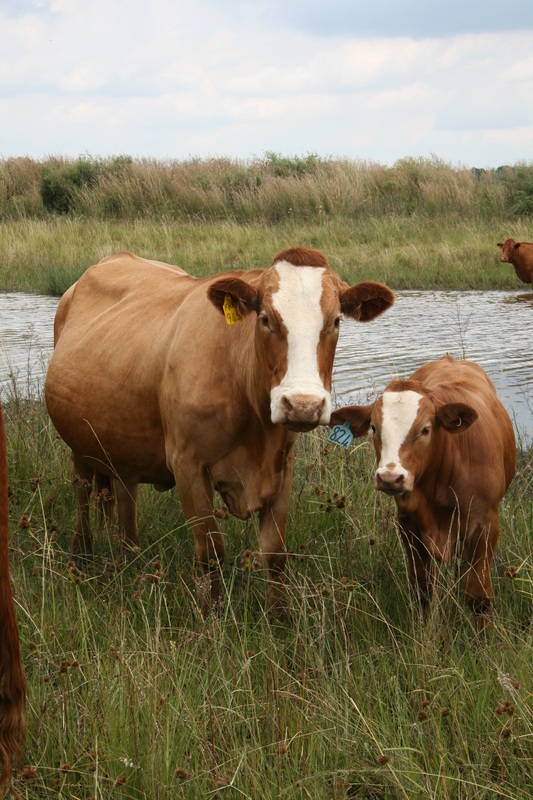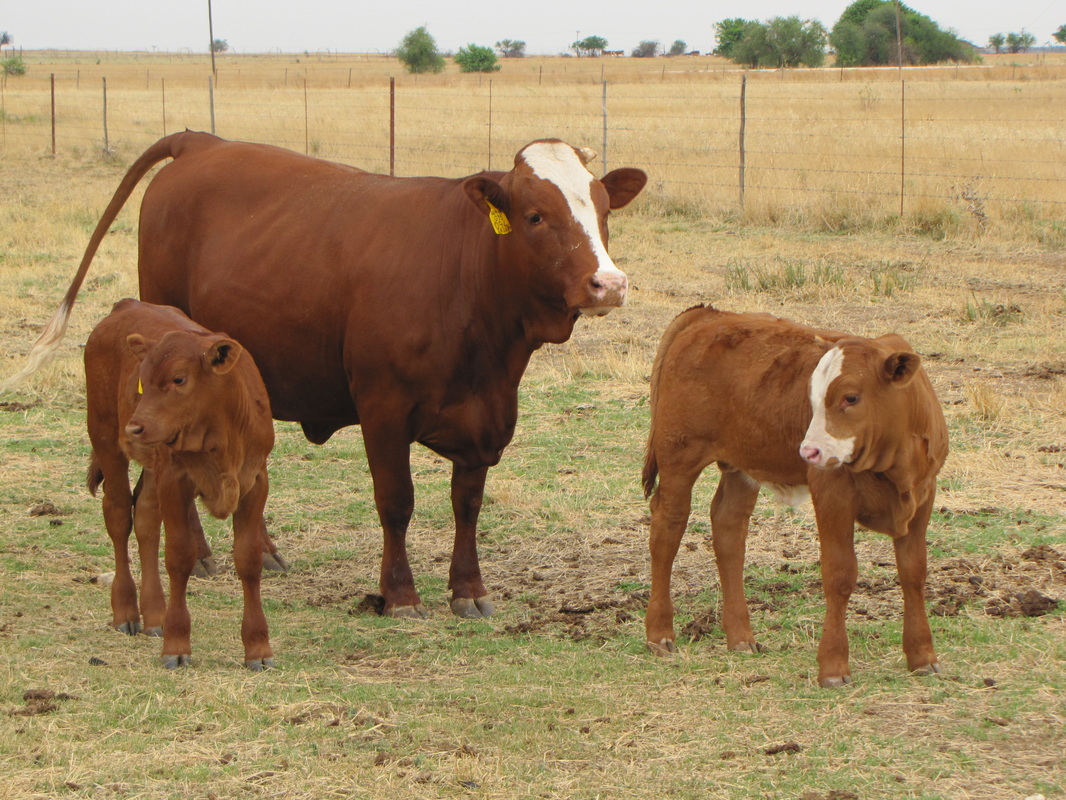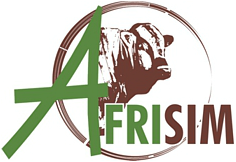Afrisim
The No - Nonsense Breed
Most likely one of the best known and oldest crossbreed practices is crossbreeding the Afrikaner and the Simmentaler.
Older farmers will often talk about the economic and breeding benefits this crossbreed has brought to commercial cattle herds over the years, because of its proven results. A few Afrikaner and Simmental breeders came together and decided to establish a new officially recognised breed of cattle, originally consisting of 50% Afrikaner and 50% Simmentaler, registering it with Studbook. The initial breeding should consist of registered Afrikaner or registered Simmentaler bulls.
In 2009, the Afrisim received official recognition as a new developing breed. Breeders can now register their cattle with Studbook and receive all the benefits it entails.
Older farmers will often talk about the economic and breeding benefits this crossbreed has brought to commercial cattle herds over the years, because of its proven results. A few Afrikaner and Simmental breeders came together and decided to establish a new officially recognised breed of cattle, originally consisting of 50% Afrikaner and 50% Simmentaler, registering it with Studbook. The initial breeding should consist of registered Afrikaner or registered Simmentaler bulls.
In 2009, the Afrisim received official recognition as a new developing breed. Breeders can now register their cattle with Studbook and receive all the benefits it entails.
Qualities
- Heat, parasite and disease tolerant
- Good walking and grazing ability
- Easy calving
- Exceptional mothering qualities
- Longevity
- Exceptional quality meat
- Performs well in feedlot
- No-nonsense minimum care, maximum profit breed
- Easy handling in controlled circumstances, due to its placid temperament
Characteristics
A medium - framed yellow to red coat, usually with a white patch forehead. The coat should be smooth and shiny, in order to repel external parasites such as ticks and flies. Exceptional walking ability, easy calving and adaptability to harsh, unpredictable South African weather. Carcass has good depth with a strong muscular back and well-defined loin. Progeny are dehorned at an early age to ensure easy handling. Polled calves occasionally occur.
They are well known for their easy calving ability and excellent mothering skills. One very important and unique legacy from the Afrikaner is the double gene that ensures tender meat when insisting on Afrisim cuts.
Alert and awake with a calm, quiet temperament and tame nature. Well pigmented in all shades of red, from dark to light, and all shades of yellow, with white patches particularly on the forehead and udder. Of particular importance is the short smooth, shiny coat and loose skin that helps repel ticks and other external parasites.
They are well known for their easy calving ability and excellent mothering skills. One very important and unique legacy from the Afrikaner is the double gene that ensures tender meat when insisting on Afrisim cuts.
Alert and awake with a calm, quiet temperament and tame nature. Well pigmented in all shades of red, from dark to light, and all shades of yellow, with white patches particularly on the forehead and udder. Of particular importance is the short smooth, shiny coat and loose skin that helps repel ticks and other external parasites.
Bulls
The bull appears masculine and powerful, with a strong head and a typical more often than not, white patch on the forehead, a deep heavy and powerful neck, somewhat of a dewlap, a firm hump, a long deep, well - muscled body, well - formed reproductive organs, strong well positioned legs with hard hooves, shiny short coat with visible darkening of the neck and front part of the hump.
Cows
The cow appears true to type and in balance with her environment in size and weight, smooth shiny coat, well-developed vulva and udder and narrower in the neck and face than the bull.
The main objective in the breeding and development of the Afrisim is to breed an animal that is easy to farm with, that performs well under pressure and is economical.
The aim is to achieve a medium frame fast growing animal, that does well in the feedlot and that can be rounded off from the veld.
Thank you to the Afrisim Cattle Breeders Society of South Africa for assisting in this page and providing us with photos
